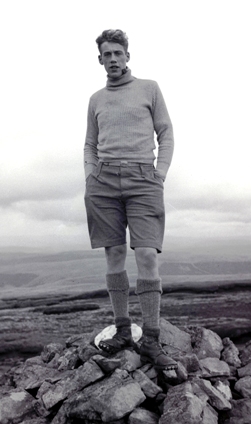 Expert on kimberlites and their xenoliths, carbonatites and rift magmatism who improved understanding of mantle melting
Expert on kimberlites and their xenoliths, carbonatites and rift magmatism who improved understanding of mantle melting
It is with a mixture of sadness at his passing and joy at his memory that we pay tribute to an outstanding geoscientist and great man, Barry Dawson.
Barry was an outstanding igneous geologist whose world-class research on kimberlites and their xenoliths, carbonatites and rift-related magmatism significantly improved our understanding of the mantle and its melting. Moreover, his collection of xenoliths and East African Rift volcanics will remain an outstanding resource for decades to come. He was the ‘Indiana Jones’ of igneous petrology – returning from remote regions with exceptional geological specimens, and many an amazing tale to recount.
Barry began his studies at Leeds University in 1953, graduating with First Class Honours in 1957 and subsequently a PhD on the kimberlites of Basutoland (Lesotho). He later gained international recognition in kimberlite research for his discovery of diamond in garnet lherzolite, his documentation of the MARID suite of mantle xenoliths, and his studies of mantle metasomatism. Barry joined the Tanganyika Geological Survey and was despatched to examine the 1960 eruption of Ol Doinyo Lengai. He found that many of the fresh lava flows were solidified from molten sodium carbonate, and so resolved the controversy over the origin of carbonatites in the most dramatic way possible - by discovering them erupted from a volcano.
He went on to determine the physical and chemical properties of natrocarbonatite lavas, re-visiting Oldoinyo Lengai in 1988 to witness this extraordinary volcano in eruption. On leaving Tanganyika in 1962, Barry took up a Postdoctoral Fellowship in Dalhousie University, Nova Scotia. He was appointed to a lectureship at the University of St Andrews in 1964, and promoted to Professor in 1975. In 1978 he became the Sorby Professor of Geology in the University of Sheffield, moving to Edinburgh in 1989 as Professor of Geology until his retirement in 1997. He did not ‘retire’, but became a very active Emeritus Professor - his latest paper being published in January 2013.
Despite his many years in, and love of, Scotland, Barry remained a proud Yorkshireman. He was excellent company and a great raconteur, always ready with a tale to tell. He was exceptionally generous with his time, wisdom and advice, both to colleagues and postgraduates. He was greatly appreciated for this – in Edinburgh the postgraduates attending our petrology seminar spontaneously raised glasses of fine malt to toast his memory.
Barry lives on through his scientific legacy. He published numerous papers, a seminal textbook,
Kimberlites and their Xenoliths, and collaborated widely. He gained many awards, including election to the Royal Society of Edinburgh in 1972, the Norman L Bowen Award of the American Geophysical Union in 1987, election to the Fellowship of the German Academy of Sciences in 1994, the Clough Medal of the Edinburgh Geological Society in 1999, and the Mineralogical Society’s Collins Medal in 2012.
We will all miss Barry, but he hasn’t gone completely. Like the Cheshire Cat in Alice's Adventures in Wonderland, he has faded but his grin will remain with us for a long time to come.
Simon L Harley & J Godfrey Fitton